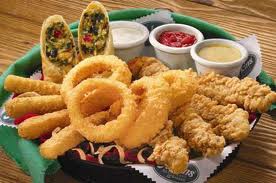|
Here's a sampling of some of the things I've been reading and reviewing this week. The hope is that these bite-sized sections of books, articles, blog posts, etc will stand on their own and be beneficial (or at least thought-provoking!) in-and-of-themselves. But I also hope that some of you will like these excerpts enough that they pull you into the larger work from which they've been taken. Let's start sampling: J.D. Greear, Jesus, Continued. . . : Why the Spirit Inside You is Better than Jesus Beside You. Zondervan, 2014. p. 49: "...those filled with the Spirit move. They move to those within their community in need of the gospel, to those outside of their communities who are broken and in need of hope, and to the ends of the earth in places that do not share their language or culture. Movements (by definition) move, and that means if you're not moving, then you're not really part of the movement. Where there is no movement, there is no Spirit." Alan J. Thompson, The Acts of the Risen Lord Jesus: Luke's Account of God's Unfolding Plan. NSBT. InterVarsity, 2011. p. 79: “In Acts the resurrection is the climax of God’s saving purposes, and it is on the basis of the resurrection that the blessings of salvation may be offered. The reason for this appears to be that in the resurrection of Jesus, the hoped-for resurrection age to come has arrived already, and it is because of the arrival of the age to come that the blessings of that age may now be received” Donald Macleod, The Person of Christ. Contours of Christian Theology. InterVarsity, 1998. p. 220:
“It is probably impossible to formulate a theory which will account fully for the total situation we encounter [in Philippians 2:7]: ([Christ] making himself nothing while at the same time retaining the form of God). Some progress, however, is possible, particularly in view of the pointers available in the accounts of the temptation in the desert. When the devil put to Jesus the proposal, ‘Tell these stones to become bread!’ there can be no doubt that Jesus had the power to perform such a miracle. He clearly exercised it when, for example, he fed the five thousand. But there was a crucial difference between the two incidents. In the first, Jesus was tempted to use his power for himself. In the second, he used it for others. He denied himself the exercise of his divine might and energies, but in other directions these energies were frequently put forth: for example, in performing the cosmic functions of the Logos, in healing the sick and in destroying the works of the devil. But they were not put forth in his own interest. In particular, they were not put forth to protect him from the implications of his decision to become incarnate and bear the sin of the world. Never once does he in his own interest or in his own defence break upon beyond the parameters of humanity. He had no place to lay his head; but he never built himself a house. He was thirsty; but he provided for himself no drink. He was assaulted by all the powers of hell; but he did not call on his legions of angels. Even when he saw the full cost of kenosis, he asked for no rewriting of the script. He bore the sin in his human body, enduing the sorrow in his human soul and redeemed the church with his human blood. The power which carried the world, stilled the tempest and raised the dead was never used to make his own conditions of service easier. Neither was the prestige he enjoyed in heaven exploited to relax the rules of engagement. Deploying no resources beyond those of his Spirit-filled humanness, he faced the foe as flesh and triumphed as man” (220).
0 Comments
Leave a Reply. |
Tim WiebeChristian. Husband. Father. Pastor. Learner. Contributor. Reader. Categories
All
Archives
June 2024
|
© 2014-2024 | 11607 M Circle, Omaha NE, 68137 | www.thebrooksideinstitute.net


 RSS Feed
RSS Feed
